The Simplicity Imperative: Plain Language Summaries of Academic and Professional Texts
Claire Fitzpatrick
Introduction
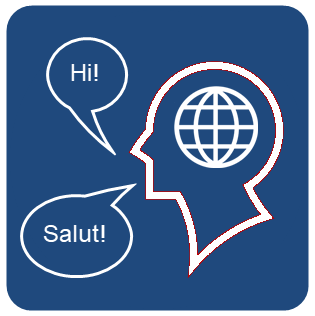 Plain language, also known as plain English or plain writing, is a style of communication that uses clear sentence structures and accessible word choices to reach the broadest possible audience. It makes documents easier to read, understand, and use, and is a critical component of accessibility. All writers, including those producing technical or academic content, have a responsibility to communicate information simply and clearly. After all, the primary goal of communication is to convey information effectively, and for many Canadians, this means implementing plain language. This chapter examines the following aspects of plain language: its importance and benefits, the urgent need, government support, fundamental principles, and tools that facilitate its implementation.
Plain language, also known as plain English or plain writing, is a style of communication that uses clear sentence structures and accessible word choices to reach the broadest possible audience. It makes documents easier to read, understand, and use, and is a critical component of accessibility. All writers, including those producing technical or academic content, have a responsibility to communicate information simply and clearly. After all, the primary goal of communication is to convey information effectively, and for many Canadians, this means implementing plain language. This chapter examines the following aspects of plain language: its importance and benefits, the urgent need, government support, fundamental principles, and tools that facilitate its implementation.
The Importance and Benefits of Plain Language and Plain Language Summaries
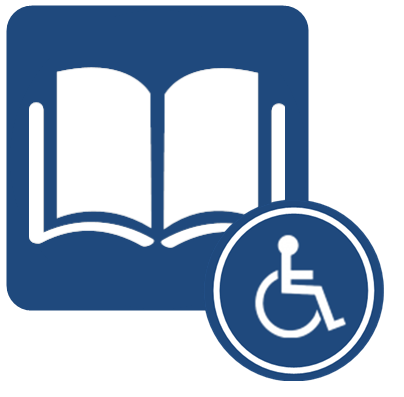 Providing materials in plain language benefits a wide range of people by making information easier to understand, absorb, and use. By eliminating unnecessary complexity, plain language ensures that key messages are accessible to everyone, not just subject matter experts. It supports readers of all backgrounds, including individuals with limited literacy skills, non-native speakers, people with cognitive disabilities, and busy professionals who need to absorb information quickly. It reduces misunderstandings, saves time, and builds trust between writers and readers. In fields such as healthcare, law, education, and government, plain language can even lead to better outcomes by enabling people to make informed decisions based on clear, accurate information (Jones & Williams, 2017). In this way, plain language empowers marginalized communities by reducing inequality and increasing agency.
Providing materials in plain language benefits a wide range of people by making information easier to understand, absorb, and use. By eliminating unnecessary complexity, plain language ensures that key messages are accessible to everyone, not just subject matter experts. It supports readers of all backgrounds, including individuals with limited literacy skills, non-native speakers, people with cognitive disabilities, and busy professionals who need to absorb information quickly. It reduces misunderstandings, saves time, and builds trust between writers and readers. In fields such as healthcare, law, education, and government, plain language can even lead to better outcomes by enabling people to make informed decisions based on clear, accurate information (Jones & Williams, 2017). In this way, plain language empowers marginalized communities by reducing inequality and increasing agency.
When information is not presented in an accessible way, public trust in institutions can erode. On the other hand, writing in plain language builds trust with the audience and makes the writing more accessible and persuasive. As the volume of online information continues to grow, plain language becomes increasingly essential for the public to be able to access and understand the information they are coming in contact with (Wen, & Yi, 2024). Key fields such as academia, healthcare, and law are often filled with jargon or “legalese,” which excludes those without specialized backgrounds, even when the information is directly relevant to them. In such cases, plain language summaries can bridge the gap.
In academia, plain language summaries (PLS) are short, peer-reviewed summaries of scholarly articles written in non-technical language. While academic abstracts typically outline a paper’s objectives, methods, results, and conclusions, they are rarely written with accessibility in mind. This is a missed opportunity. A well-crafted PLS can provide a general audience with a clear understanding of academic research, expanding the reach of scholarly work (Wen, & Yi, 2024). This benefits both researchers by increasing readership and the public by improving access to knowledge. Compared to traditional abstracts, plain language summaries are more likely to be understood by lay readers, who also tend to view the findings as more credible and actionable (Kerwer et al., 2021). PLS also promotes transparency and accountability in the scientific process, which contributes to a culture of trust between academics and the public (Maurer et al., 2021). This strategy cultivates an academic environment that values accessibility and inclusion, enabling the public to more easily comprehend and connect with ongoing research. This narrows the gap between researchers and industry professionals who are impacted by their work.
Plain language summaries are especially useful for stakeholders such as professionals, researchers, students, science communicators, policymakers, journalists, and the general public (Rosenberg et al., 2023). With the internet making academic resources more accessible than ever, the demand for plain language has grown accordingly. It is also a core tenet of web accessibility and supports technologies for users who are blind, deaf, or have other disabilities (Boldyreff et al., 2017). This is because plain language writing is designed to be understood by those who may not have the full context with minimal mental strain, which is beneficial for many readers for countless reasons.
Plain language summaries are increasingly common in service-learning pedagogy, which integrates classroom learning with community engagement (Matveeva et al., 2017). In this context, students learn to communicate research in ways that are meaningful to the public. It also allows for broader participation which can in turn benefit the writer. For instance, if a patient can read a plain language summary of research on a treatment they are considering, it alleviates some workload from their medical team (Wen, & Yi ,2024). According to Canada.ca Style Guide (2024) plain language can also improve customer satisfaction and cut costs and resources used by reducing follow up inquiries. Therefore, the work that is put into learning how to write in plain language is worth it not only for the inherent accessibility benefits, but also for the long-term time- and energy-saving benefits.
In the context of academic or other technical writing, it may not be possible to present all the details in plain language. However, the objective is not that the reader of a plain language summary be able to understand every detail, but it is a tool to support an accurate understanding of the text at an appropriate level for a non-subject matter audience (Rosenberg et al., 2023).
The Urgency of Plain Language
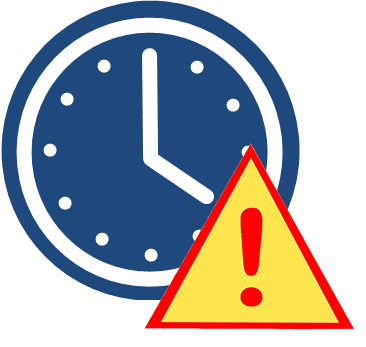 The need for plain language is a pressing reality for a significant portion of Canadian society. Canada was one of 31 countries to participate in the Survey of Adult Skills, which measures literacy, numeracy, and problem-solving abilities. According to the OECD’s 2023 results, 19% of Canadian adults read at or below Level 1 literacy, meaning they can only understand short texts and clearly organized lists. Nearly half of Canadians read at Level 2 or below, requiring simple vocabulary and minimal inference to comprehend text accurately (OECD,2023). While the causes of low literacy vary, the implication is clear: for nearly half of Canadians, information must be presented in plain language to be fully understood.
The need for plain language is a pressing reality for a significant portion of Canadian society. Canada was one of 31 countries to participate in the Survey of Adult Skills, which measures literacy, numeracy, and problem-solving abilities. According to the OECD’s 2023 results, 19% of Canadian adults read at or below Level 1 literacy, meaning they can only understand short texts and clearly organized lists. Nearly half of Canadians read at Level 2 or below, requiring simple vocabulary and minimal inference to comprehend text accurately (OECD,2023). While the causes of low literacy vary, the implication is clear: for nearly half of Canadians, information must be presented in plain language to be fully understood.
In 2012, Statistics Canada and Canadian Literacy organizations found that almost 50% of Canadians have literacy challenges, meaning they “skipped over large amounts of information when it contains many multi-syllable words, uncommon terms and long sentences” (Government of Canada, 2024). As well, they needed time to read word by word. This is why word choice and sentence structure are critical components of plain language writing, even when the multisyllabic word is well known when spoken.
Government Support for Plain Language
 Accessibility Standards Canada has created a voluntary compliance standard for plain language accessibility for all levels and bodies of the federal government of Canada and federally regulated industries. It provides a good guide for plain language and accessibility, even for those outside the government sector, and was developed with the highest standards of equity and international best practices in mind, rather than the minimum standards for readability (Government of Canada Communications Community Office,2025). Therefore, it is an excellent guide to understanding the principles of plain language, and for consulting and troubleshooting important questions about standards.
Accessibility Standards Canada has created a voluntary compliance standard for plain language accessibility for all levels and bodies of the federal government of Canada and federally regulated industries. It provides a good guide for plain language and accessibility, even for those outside the government sector, and was developed with the highest standards of equity and international best practices in mind, rather than the minimum standards for readability (Government of Canada Communications Community Office,2025). Therefore, it is an excellent guide to understanding the principles of plain language, and for consulting and troubleshooting important questions about standards.
The provincial government is also committed to supporting plain language through the Accessibility for Ontarians with Disability Act (AODA). Plain language supports the four core principles of the AODA: dignity, independence, integration, and equal opportunity (Accessibility for Ontarians with Disabilities Act, 2005). It makes information more accessible to everyone, including people with disabilities. Using clear and straightforward language respects individuals’ dignity by allowing them to understand information without relying on others. It promotes independence by enabling people to access and act on information on their own (Government of Canada Communications Community Office,2025). Plain language also supports integration, as it allows people with diverse communication needs to fully participate in programs, services, and conversations. Ultimately, it ensures equal opportunity by eliminating language barriers that can prevent individuals from accessing essential information and services.
The Basic Principles of Plain Language
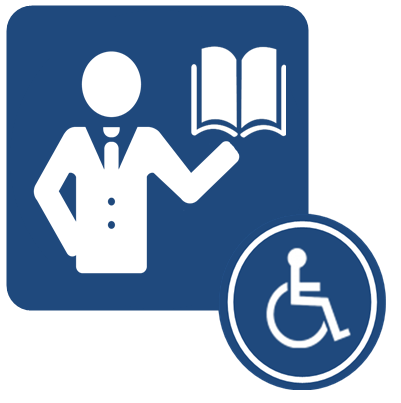 Writing in plain language means thinking about the reader’s needs first. The basic principle is to assume that the reader is intelligent, but may not be familiar with the subject matter. Plain language means using words and sentence structures that make the message as clear as possible for the audience. This involves choosing common, familiar words instead of complex or technical terms, unless those terms are necessary for precision and accuracy. When technical terms must be used, they should be clearly defined in simple terms. Clarity also comes from using straightforward sentence structures. This means keeping sentences relatively short and avoiding complicated grammar that could confuse readers.
Writing in plain language means thinking about the reader’s needs first. The basic principle is to assume that the reader is intelligent, but may not be familiar with the subject matter. Plain language means using words and sentence structures that make the message as clear as possible for the audience. This involves choosing common, familiar words instead of complex or technical terms, unless those terms are necessary for precision and accuracy. When technical terms must be used, they should be clearly defined in simple terms. Clarity also comes from using straightforward sentence structures. This means keeping sentences relatively short and avoiding complicated grammar that could confuse readers.
Importantly, using plain language is not about simplifying content to the point of losing meaning. Rather, it is about presenting information clearly and concisely for a broader audience. The misconception that complex language signals intelligence often results in readability and credibility being sacrificed. A key principle of plain language is “short words, short sentences, short paragraphs” (Edgell & Rosenberg, 2022).
The following points summarize key ways to make writing more clear and concise:
- Avoid assuming background knowledge unless it’s reasonable to expect that the audience has this knowledge.
- Consider what the reader needs to know, and what might confuse them.
- Anticipate questions or misunderstandings to inform how to explain ideas more effectively. Write as if explaining the topic to a smart, curious reader who is unfamiliar with the subject.
- Choose words that are accurate without being unnecessarily complex. For example, instead of saying “utilize,” say “use.” Instead of “subsequent to,” say “after.” These simpler alternatives often convey the same meaning with fewer syllables and less mental effort for the reader.
- Write in the active voice to make sentences more direct and easier to understand. In an active sentence, the subject performs the action, which often leads to more engaging and efficient writing. For example, “You must submit the form by June 10th” is active and clear, while “The form must be submitted by June 10th by the applicant” is passive and slightly more cumbersome. While passive voice can be useful in certain contexts, especially when the doer is unknown or irrelevant, it should not dominate the writing. Favouring the active voice helps readers quickly grasp who is doing what.
- Avoid long, winding sentences that try to pack in too much information at once. Break complex ideas into multiple sentences when needed. Plain language involves a logical flow of ideas. Each sentence should contribute to the main point of the paragraph, and each paragraph should focus on a single idea or aspect of the topic.
- Use transition words and phrases—such as “however,” “in contrast,” “for example,” and “as a result”—to show the relationship between ideas. These guideposts help readers follow the argument more easily.
- Remove extra words that don’t add value. Reducing wordiness improves readability and keeps the writing focused. Before the work is finalized, review each sentence to see if it can be tightened without losing meaning. This will help keep the content concise and powerful.
Tools to Support the Implementation of Clear Language
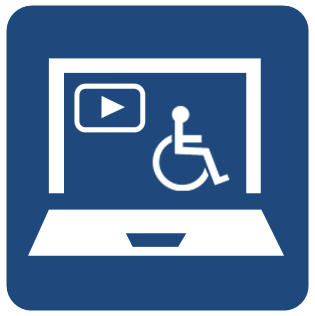 One practical tool for evaluating readability is the “Simple Measure of Gobbledygook” (SMOG), developed by clinical psychologist G. Harry McLaughlin in 1969. The SMOG Index is calculated based on 10 sentences each from the beginning, middle, and end of a text. The tool counts the words with three or more syllables, and then calculates the square root of the total count, rounding to the nearest 10 (McLaughlin, 1969). Despite its simplicity, the SMOG Index is a reliable way to assess whether a document is suitable for a general audience by giving a numerical benchmark by which the writing is evaluated.
One practical tool for evaluating readability is the “Simple Measure of Gobbledygook” (SMOG), developed by clinical psychologist G. Harry McLaughlin in 1969. The SMOG Index is calculated based on 10 sentences each from the beginning, middle, and end of a text. The tool counts the words with three or more syllables, and then calculates the square root of the total count, rounding to the nearest 10 (McLaughlin, 1969). Despite its simplicity, the SMOG Index is a reliable way to assess whether a document is suitable for a general audience by giving a numerical benchmark by which the writing is evaluated.
Online tools, such as the Hemingway Editor and the Flesch-Kincaid readability test (available in Microsoft Word), also help writers identify complex sentences, passive voice, and difficult vocabulary (Flesch Kincaid Calculator | Good Calculators, n.d.) (Hemingway Editor, n.d.). These tools can be used during the writing process to ensure that writing is at an appropriate level for a general audience, as well as flagging common pitfalls of inaccessible wording and sentence structure. These tools are especially helpful for subject matter experts who may struggle to judge the accessibility of their own writing.
Fortunately, a range of digital tools has also emerged to support the conversion of complex writing into plain language, thereby enhancing accessibility for readers who may struggle with dense or technical texts. Among these innovations are generative artificial intelligence (AI) tools, which are specifically designed to translate specialized jargon and complex sentence structures into language that is clear, concise, and easily understood by a broader audience. One such tool is Eye-Able Plain Language AI, a free, web-based application that analyzes written content for elements that contribute to cognitive load, such as lengthy sentences, domain-specific terminology, and abstract concepts, and systematically rephrases them to improve readability and comprehension (Eye-Able® Plain Language AI | Eye-Able®, n.d.).
Eye-Able is marketed toward a general audience, with the goal of democratizing access to information typically found in academic, legal, or technical documents. While best practices in communication recommend that texts be written in plain language from the outset, this is not always feasible, particularly in specialized fields. Therefore, tools like Eye-Able serve a critical function by retroactively simplifying content, ensuring that individuals who require plain language are not excluded from engaging with important information. In doing so, such tools contribute to greater inclusivity and equity in information dissemination, effectively opening up a wide array of documents to readers who might otherwise find them inaccessible.
Conclusion
Plain language is not just a stylistic choice. It is a powerful tool for inclusion, equity, and effective communication. By making information accessible to a wider audience, plain language enhances understanding, builds trust, and empowers individuals to make informed decisions. In a world where information is abundant but not always accessible, adopting plain language practices is both a moral and practical imperative. Although writing in plain language requires practice, tools like the Hemingway Editor and Flesch-Kincaid can ease the transition. Further, AI can support the transition of difficult texts into plain language. Whether in academia, healthcare, government, or everyday communication, plain language ensures that knowledge is not confined to the few. Rather, it is shared with the many.
References
Accessibility for Ontarians with Disabilities Act, S.O. 2005, c. 11. https://www.ontario.ca/laws/statute/05a11
Boldyreff, C., Burd, E., Donkin, J., & Marshall, S. (2001). The case for the use of plain English to increase web accessibility. Proceedings 3rd International Workshop on Web Site Evolution. WSE 2001, 42–48. https://doi.org/10.1109/wse.2001.988784
Edgell, C., & Rosenberg, A. (2022). Putting plain language summaries into perspective. Current Medical Research and Opinion, 38(6), 871–874. https://doi.org/10.1080/03007995.2022.2058812
Eye-Able® Plain Language AI | Eye-Able®. (n.d.). Eye-Able. https://eye-able.com/simple-language-ai
Flesch Kincaid Calculator | Good Calculators. (n.d.). https://goodcalculators.com/flesch-kincaid-calculator/
Government of Canada. (2024). Canada.ca content style guide. Digital Transformation Office. https://design.canada.ca/style-guid
Government of Canada Communications Community Office. (2025). CAN/ASC-3.1: Plain language – Accessibility Standards Canada [PDF]. https://accessible.canada.ca/sites/default/files/2024-03/sd-prd-3.1pl-standarddraftv07.2-20240207-en-aoda.pdf
Hemingway Editor. (n.d.). https://hemingwayapp.com/
Jones, N. N., & Williams, M. F. (2017). The social justice impact of plain language: A critical approach to plain-language analysis. IEEE Transactions on Professional Communication, 60(4), 412–429. https://doi.org/10.1109/tpc.2017.2762964
Kerwer, M., Chasiotis, A., Stricker, J., Günther, A., & Rosman, T. (2021). Straight from the scientist’s mouth—plain language summaries promote laypeople’s comprehension and knowledge acquisition when reading about individual research findings in psychology. Collabra: Psychology, 7(1). https://doi.org/10.1525/collabra.18898
Matveeva, N., Moosally, M., & Willerton, R. (2017). Plain language in the twenty-first century: Introduction to the special issue on plain language. IEEE Transactions on Professional Communication, 60(4), 336–342. https://doi.org/10.1109/tpc.2017.2759619
Maurer, M., Siegel, J. E., Firminger, K. B., Lowers, J., Dutta, T., & Chang, J. S. (2021). Lessons learned from developing plain language summaries of research studies. HLRP: Health Literacy Research and Practice, 5(2), e155–e161. https://doi.org/10.3928/24748307-20210524-01
McLaughlin, G. H. (1969). SMOG grading—A new readability formula. Journal of Reading, 12(8), 639–646.
OECD. (2024). Do adults have the skills they need to thrive in a changing world?: Survey of adult skills 2023. OECD Skills Studies, OECD Publishing. https://doi.org/10.1787/b263dc5d-en
Rosenberg, A., Walker, J., Griffiths, S., & Jenkins, R. (2023). Plain language summaries: Enabling increased diversity, equity, inclusion and accessibility in scholarly publishing. Learned Publishing, 36(1), 109–118. https://doi.org/10.1002/leap.1524
Wen, J., & Yi, L. (2024). Are plain language summaries more readable than scientific abstracts? Evidence from six biomedical and life sciences journals. Public Understanding of Science, 34(1), 114–126. (Original work published 2025) https://doi.org/10.1177/09636625241252565
